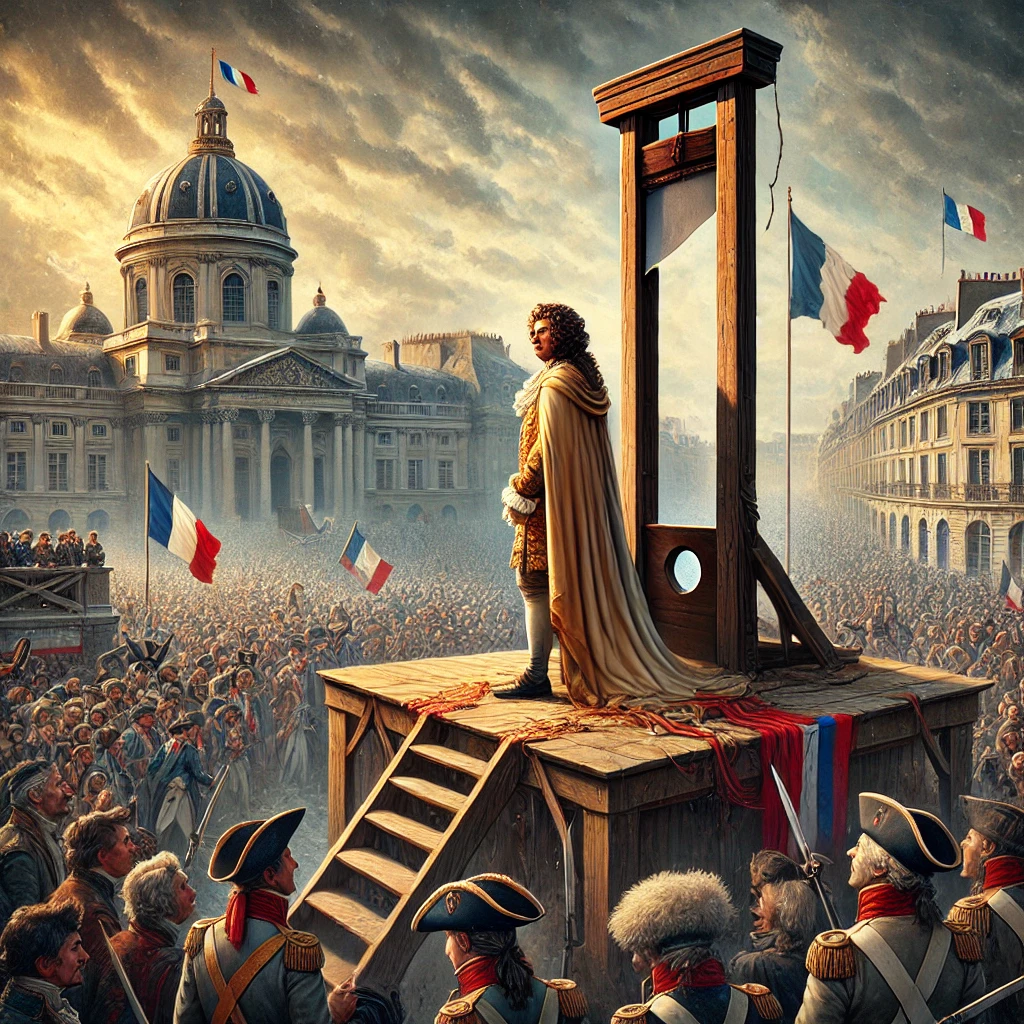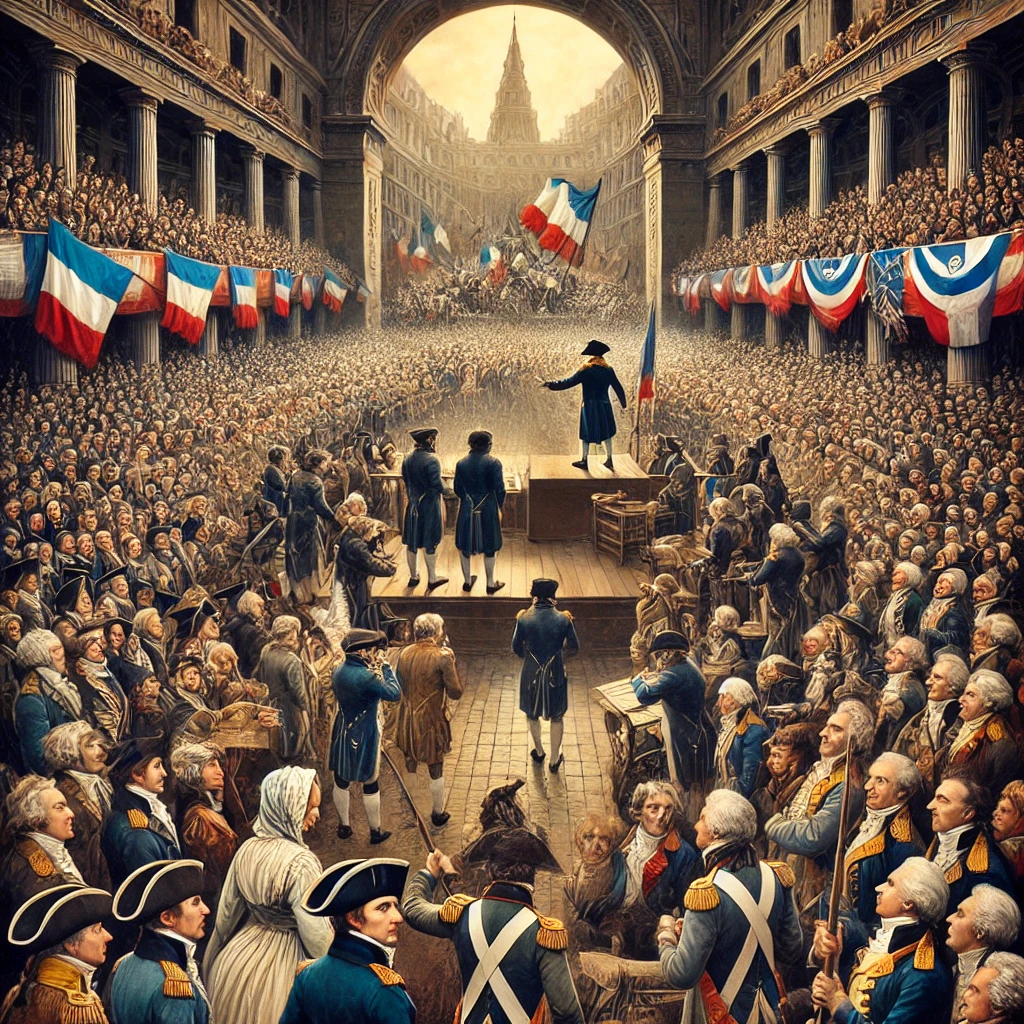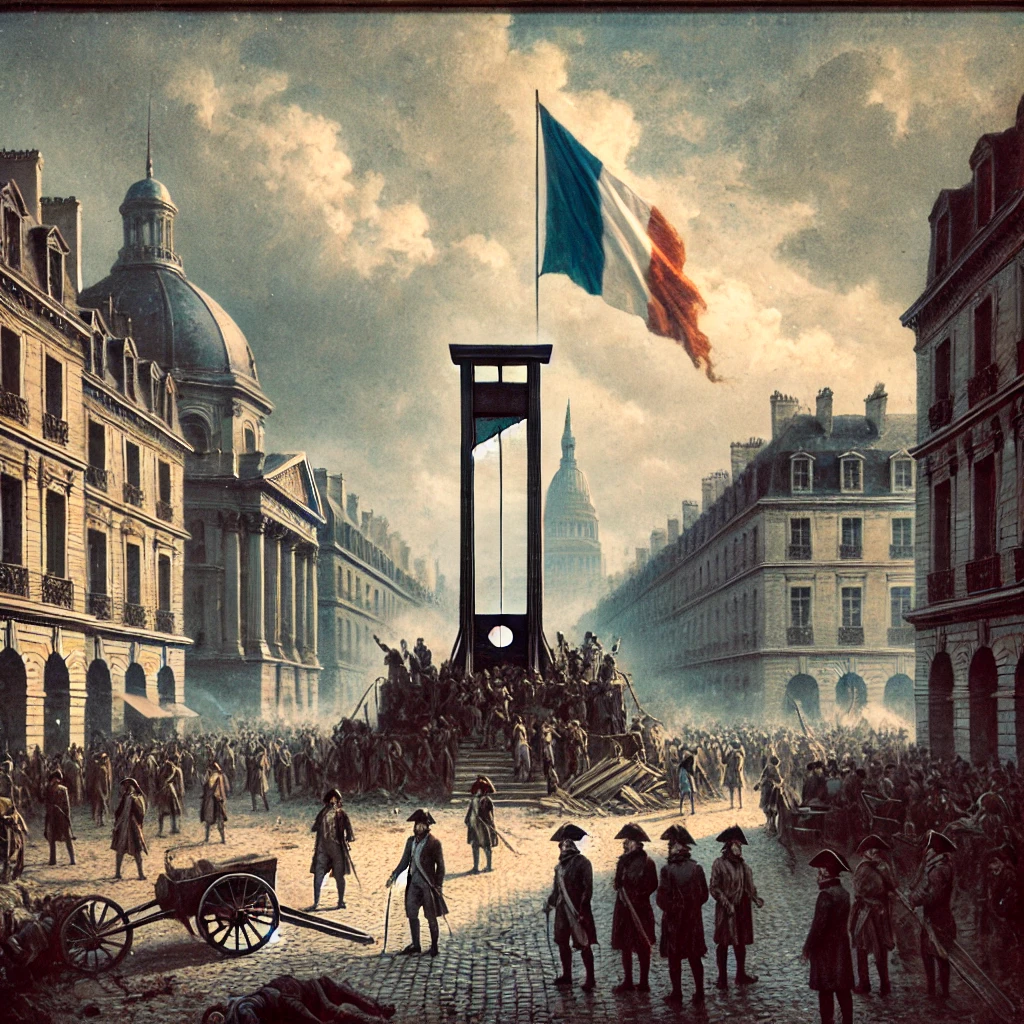On January 21st, 1793, King Louis XVI of France was executed by guillotine, marking a pivotal moment in the French Revolution and the shift toward a republic. This act was not just the culmination of years of political unrest and societal upheaval but also a definitive rejection of absolute monarchy in France. The execution of Louis XVI sent shockwaves across Europe and solidified the revolutionary government’s commitment to radical change.

The Path to Revolution
The French Revolution began in 1789, driven by widespread discontent among the lower and middle classes over economic inequality, political corruption, and the burden of taxation. Louis XVI, although initially viewed as a well-meaning monarch, struggled to address the mounting crises facing his kingdom. The Estates-General of 1789 and the subsequent formation of the National Assembly highlighted the growing divide between the monarchy and the people.
The storming of the Bastille, the drafting of the Declaration of the Rights of Man and of the Citizen, and the rise of revolutionary factions further eroded the king’s authority. Louis’s attempted flight to Varennes in 1791, where he sought to escape France and rally royalist supporters, was a turning point that undermined any remaining trust in his leadership. By the time the monarchy was formally abolished in 1792, Louis was already a prisoner of the revolution.
The Trial and Execution

The decision to execute Louis XVI was not taken lightly. Following the abolition of the monarchy, Louis was put on trial by the National Convention, accused of treason and conspiring with foreign powers to suppress the revolution. The trial was highly contentious, with moderates arguing for clemency and radicals demanding his death as a necessity for the revolution’s survival.
On January 20th, 1793, Louis was found guilty by an overwhelming majority and sentenced to death. The following day, he was led to the guillotine in the Place de la Révolution (now the Place de la Concorde). His execution was witnessed by thousands, many of whom viewed the event with a mix of triumph and trepidation. Louis’s final words expressed forgiveness and hope for his people, but his death symbolized the end of an era.
A Legacy of Change

The execution of Louis XVI had profound and lasting impacts on both France and the broader world. Domestically, it cemented the revolution’s radical phase, paving the way for the Reign of Terror under Robespierre and the Committee of Public Safety. Internationally, it shocked monarchies across Europe, leading to the formation of coalitions against revolutionary France and years of warfare.
In the long term, the revolution’s principles—liberty, equality, and fraternity—would inspire democratic movements worldwide. The abolition of the monarchy and the establishment of the First French Republic marked a decisive break from feudalism and absolute rule. Although the revolution eventually gave way to Napoleon Bonaparte’s rise, its ideals persisted, influencing future generations.
Louis XVI’s execution remains a significant historical moment, not just for its immediate consequences but also for its symbolic rejection of autocratic power. It served as a reminder of the potential for collective action to reshape political systems and highlighted the complex interplay between justice, revolution, and human rights.
The guillotine, which came to epitomize the French Revolution, also raises enduring questions about the morality of capital punishment and the use of violence in the pursuit of political change. As we reflect on this day in history, the execution of Louis XVI reminds us of the fragility of power and the enduring struggle for justice and equality.
